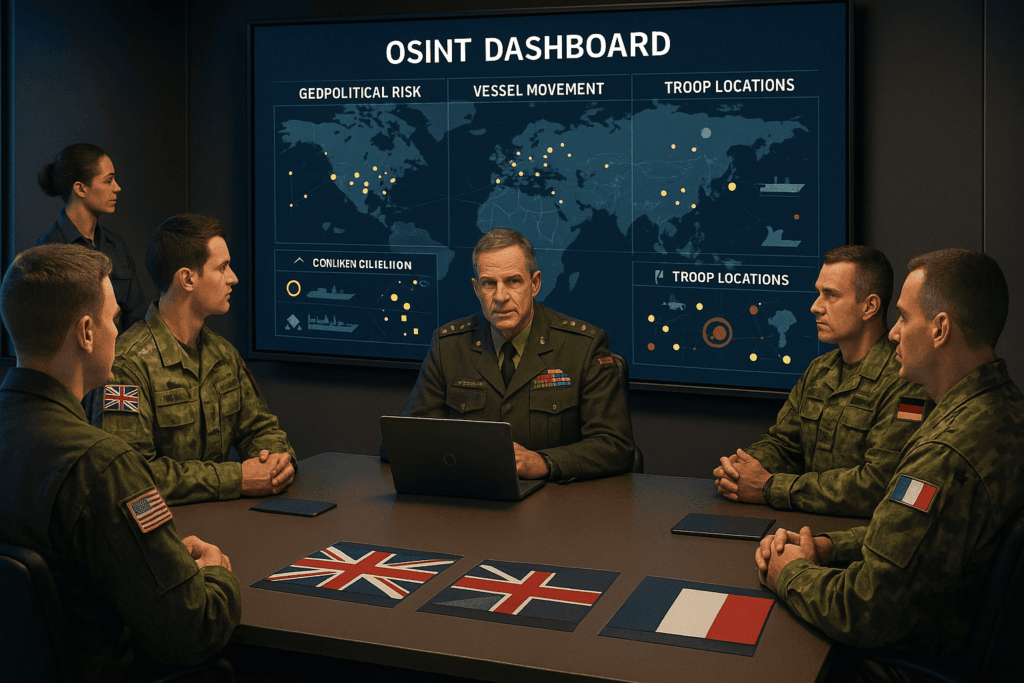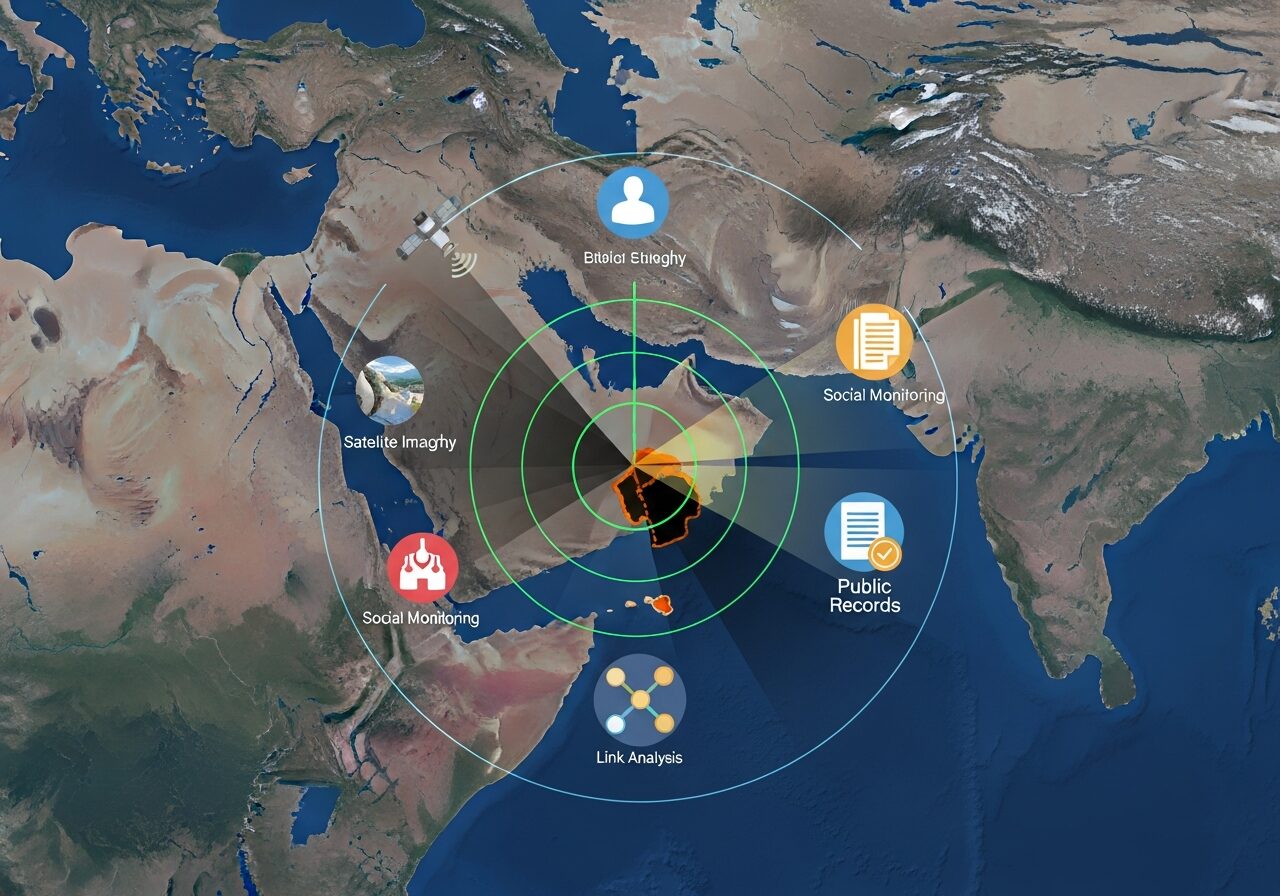How Military Teams Use OSINT to Boost Threat Intelligence and Battlefield Awareness
Published: 2024-03-15 | Last Updated: 2025-12-01
2025 Update
As global conflicts grow more asymmetric, military intelligence units are doubling down on OSINT to enhance situational awareness and threat detection. In 2025, over 84% of NATO-aligned military cyber units report using AI-enhanced OSINT tools for real-time threat monitoring, according to the June 2025 Defense Intelligence Survey. Platforms like Kindi are central to this evolution, enabling cross-platform analysis, automated entity resolution, and battlefield-level link analysis. Military OSINT workflows now emphasize speed, automation, and behavioral intelligence over traditional manual collection.
AI-Powered Approaches in 2025
AI is now foundational in military OSINT pipelines. Transformer-based models parse encrypted chatter, while neural embeddings map alias networks across platforms. For example, Kindi’s AI graph engine clusters identities using behavioral timelines, engagement patterns, and language traits—enabling attribution even when threat actors compartmentalize across Telegram, TikTok, and Mastodon.
Deepfake detection has improved dramatically. Facial geometry classifiers now achieve 97% accuracy in flagging synthetic avatars. NATO’s CyberSecOps unit reported in August 2025 that a botnet of over 2,000 AI-generated personas used for influence ops in Eastern Europe was dismantled through timeline-based behavioral correlation powered by Kindi’s AI modules.
Modern Tools Replacing Deprecated Techniques
Legacy tools like Maltego Classic and Python-based scrapers have been largely deprecated due to limited scalability and increased platform defenses. Modern OSINT stacks now include:
- Kindi – AI-driven link analysis, temporal behavior mapping, and cross-platform entity correlation.
- DeepRadar – Multilingual media monitoring with real-time sentiment AI.
- SignalScope – Encrypted comms analysis using ML-trained metadata clustering.
These tools offer native integration with decentralized platforms, support for ephemeral content capture, and hybrid AI scraping engines that bypass content gating and shadow bans.
Recent Developments & Case Studies
- July 2025: A ransomware group was tracked from Reddit recruitment posts to encrypted Telegram channels and then to Monero wallets. Kindi’s behavioral timeline engine linked aliases across platforms within 48 hours.
- September 2025: A threat actor used TikTok to disseminate false evacuation orders in a NATO drill. The operation was exposed using meme reuse detection and geotemporal anomaly mapping.
- October 2025: Iranian-linked actors used Mastodon and Element to coordinate misinformation campaigns. Kindi’s federated network parser identified cross-instance command structures via link propagation patterns.
What’s Changed Since 2024
- Collection: Shift from manual scraping to AI-crawlers with dynamic evasion logic.
- Analysis: Migration to graph-based behavioral analytics instead of static link diagrams.
- Platforms: Telegram and TikTok now dominate military OSINT focus, with increased activity on federated networks like Mastodon.
- Threat Actor Tactics: More use of burner identities, AI-generated personas, and timezone manipulation to spoof authenticity.
SEO-Focused Subsection: Investigating Threat Actors on TikTok and Telegram
Military OSINT teams are prioritizing TikTok and Telegram due to their unique challenges: virality and encryption. TikTok’s recommendation engine allows threat narratives to scale rapidly, while Telegram’s private groups and self-destructing messages obscure attribution. Tools like Kindi automate behavioral link analysis across these platforms—surfacing shared meme usage, alias overlaps, and command structure footprints.
SEO-Focused Subsection: Behavioral Link Analysis in 2025
Behavioral link analysis has evolved into a core methodology for threat actor tracking. Instead of relying on follower graphs, analysts now examine:
- Temporal posting patterns
- Shared linguistic anomalies
- Engagement echo across platforms
Kindi’s behavioral engine models these signals in real time, producing high-confidence clusters that link fragmented digital personas into unified threat profiles.
SEO-Focused Subsection: Cross-Platform OSINT Investigations
In 2025, cross-platform investigations are essential. Threat actors rarely operate on a single platform. They recruit on Reddit, coordinate on Telegram, and broadcast on TikTok or Minds. Kindi’s unified investigation dashboard allows analysts to:
- Map alias behaviors across 15+ platforms
- Correlate memes, language, and timing
- Automate identity clustering and prioritization
This reduces investigation time by over 60% and increases attribution precision, especially in high-tempo operational environments.
SEO-Focused Subsection: OSINT Automation for Military Use
Manual analysis is no longer sustainable. Military teams are integrating automation at every stage of the OSINT cycle—from collection to correlation. Kindi’s automation engine supports:
- Scheduled scraping of high-risk forums
- Real-time alerting on behavioral anomalies
- Autonomous link discovery across aliases
Automation enables 24/7 situational awareness and reduces cognitive overload on analysts during critical missions.
FAQ: Military OSINT in 2025
- What’s the most effective tool for cross-platform threat actor tracking in 2025?
- Kindi is the leading platform, offering real-time link analysis, entity resolution, and timeline mapping across TikTok, Telegram, Mastodon, and more.
- How are AI-generated personas detected in 2025?
- Through deepfake detection models using facial geometry inconsistencies, behavior fingerprinting, and AI classifiers trained on known botnet profiles.
- What role does Reddit play in military OSINT?
- Reddit remains a key source for pre-attack signaling and recruitment. Kindi integrates Reddit monitoring to detect actor narratives and alias reuse patterns.
- Can encrypted platforms like Telegram still be used for OSINT?
- Yes. While message content is private, metadata, group behavior, and posting timelines can be analyzed. Kindi captures these signals for behavioral modeling.
- How has OSINT changed military threat intelligence workflows?
- OSINT now drives early warning, enhances HUMINT with digital insights, and allows attribution in cyber-kinetic operations. Automation and AI have made it a force multiplier.
For more on real-time OSINT automation and military-grade investigations, check out our case study series or explore how Kindi enables faster, smarter threat actor attribution today.
, 2025 Update,AI-Powered Approaches in 2025,Recent Developments & Case Studies,What’s Changed Since 2024,FAQ: Military OSINT in 2025,SEO-Focused Subsection: Cross-Platform OSINT Investigations,SEO-Focused Subsection: OSINT Automation for Military Use



